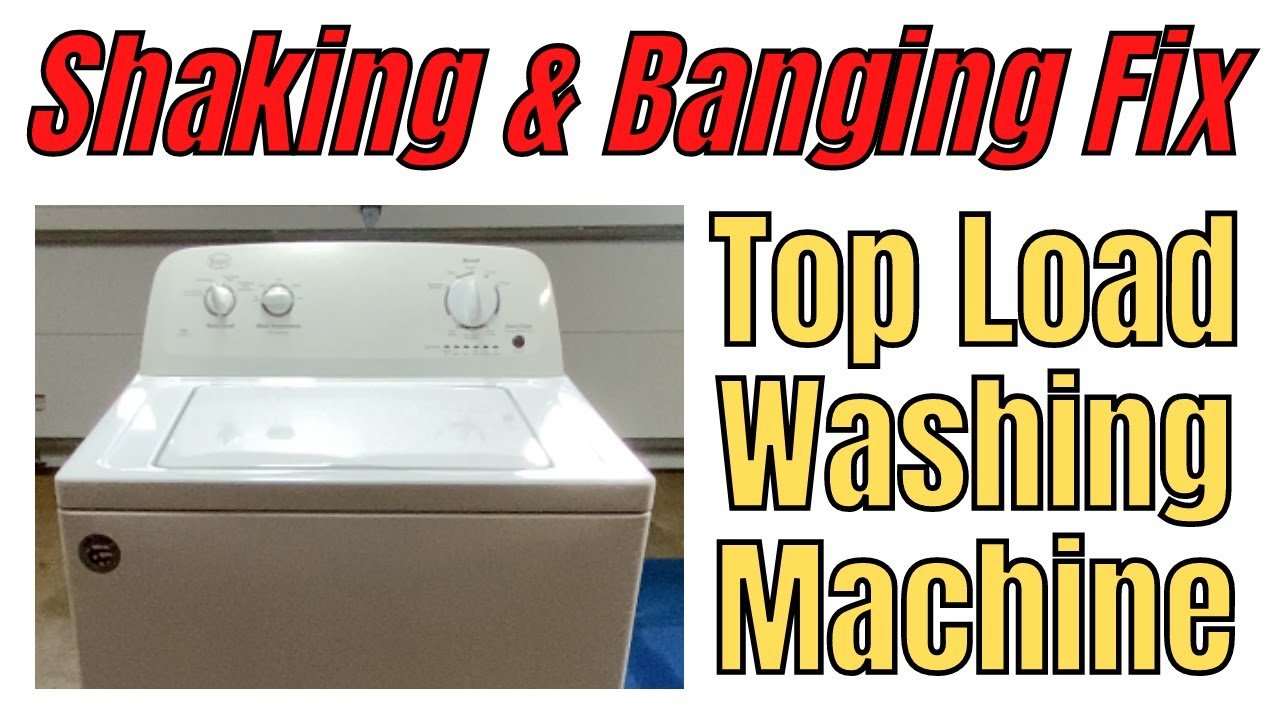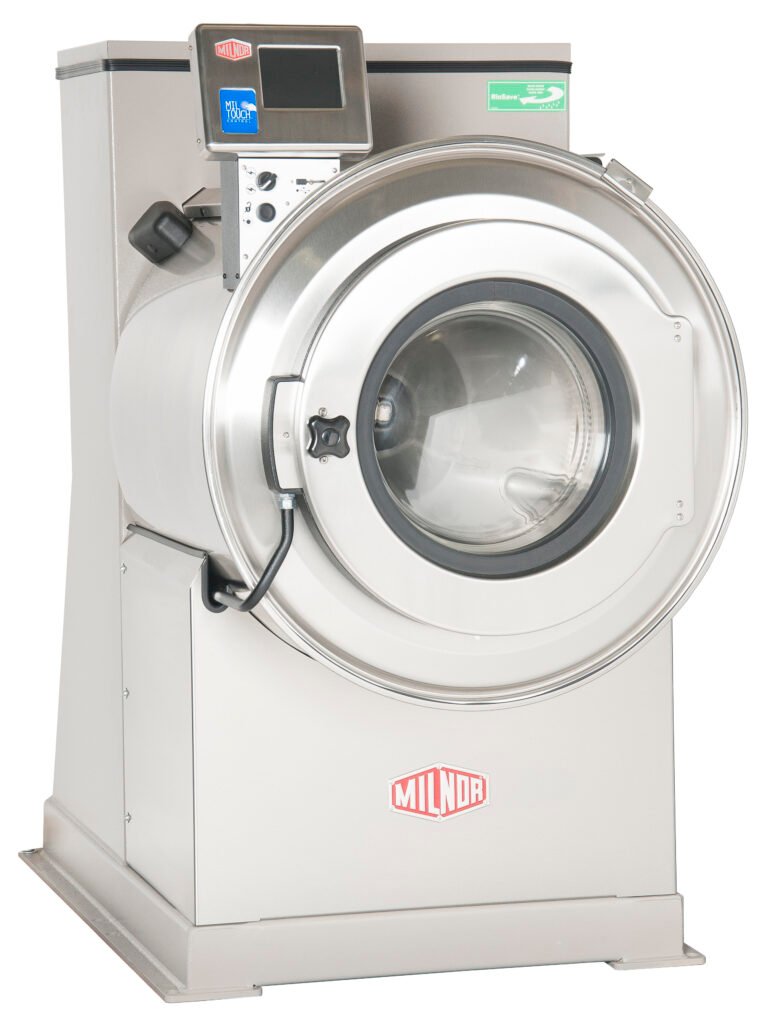
Roper washer troubleshooting can be done by checking common issues such as power supply, water inlet, and drainage problems. Here is a guide to help you resolve these problems and get your washer back to working condition.
When your Roper washer suddenly stops working, it can be frustrating. Luckily, most issues can be resolved with some simple troubleshooting steps. We will go through the common problems that Roper washers face and how you can fix them. Whether it’s a power issue, water supply problem, or drainage blockage, we’ll walk you through the steps to identify and resolve the problem.
By following these troubleshooting tips, you can save time and money by avoiding unnecessary repairs or service calls. So let’s dive in and get your Roper washer up and running again!

Credit: www.partselect.com
Common Issues With Roper Washers
Roper washers are known for their reliability and efficiency in tackling dirty laundry. However, like any other appliance, problems may arise from time to time. It’s essential to be aware of the common issues with Roper washers and how to troubleshoot them. In this section, we’ll explore three frequently encountered problems: washer not spinning, washer not draining, and washer not starting.
Washer Not Spinning
One of the most frustrating issues you may encounter with your Roper washer is when it refuses to spin. Several factors could contribute to this problem, ranging from a simple fix to a more complex repair.
To troubleshoot this issue, follow these steps:
- Check the lid switch: The lid switch plays a crucial role in ensuring the washer spins. If the switch is faulty, the washer will not spin. Inspect the switch to see if it’s broken or loose. If necessary, replace the lid switch.
- Examine the drive belt: The drive belt connects the motor to the transmission and enables it to spin. Over time, the belt may become worn or broken. Inspect the drive belt for any signs of damage. If it’s damaged, replace it with a new one.
- Inspect the motor coupling: The motor coupling is responsible for transferring power from the motor to the transmission. If the coupling is broken or worn, it can prevent the washer from spinning. Check the motor coupling and replace it if necessary.
Washer Not Draining
Another common issue Roper washer owners often face is a failure to drain properly. When this occurs, your laundry may be left soaking wet at the end of the cycle. Fortunately, there are steps you can take to resolve this problem.
To troubleshoot a washer not draining, follow these steps:
- Check for obstructions: Start by inspecting the drain hose for any blockages. Foreign objects can get lodged in the hose, preventing water from draining. Remove any clogs or debris that may be obstructing the hose.
- Inspect the drain pump: The drain pump is responsible for removing water from the washer. If the pump is faulty or clogged, it will hamper the draining process. Check the pump for any blockages, clean it if necessary, or replace it if it’s damaged.
Washer Not Starting
Have you ever encountered a situation where your Roper washer refuses to start? This can be a frustrating issue, but don’t worry, there are a few things you can check to get your washer up and running again.
To troubleshoot a washer not starting, consider the following:
- Check the power supply: Ensure your washer is plugged securely into a functioning power outlet. Test the outlet with another device to confirm it’s working.
- Inspect the door or lid switch: The door or lid switch serves as a safety feature, preventing the washer from starting if the door is open. Check if the switch is stuck or damaged. If needed, replace the door or lid switch.
- Look for error codes: Some Roper washers have error codes that provide useful information about the problem. Consult your washer’s manual to identify any error codes and follow the recommended troubleshooting steps.
By following these troubleshooting steps, you can address common issues with your Roper washer, ensuring its optimal performance and extending its lifespan. If the problem persists or requires professional assistance, it’s best to contact a qualified appliance technician.
Possible Causes And Solutions
When your Roper washer starts acting up, it can be frustrating and inconvenient. However, before you panic and call a technician, it’s worth taking the time to troubleshoot the issue yourself. In this section, we will explore some common problems that Roper washers may face and provide you with the possible causes and solutions for each one. By following these suggestions, you might be able to save time and money by resolving the issue on your own.
Washer Not Spinning
One of the most common issues that Roper washer owners encounter is a machine that refuses to spin. This problem can have several possible causes:
- The lid switch may be faulty or not properly engaged, preventing the washer from spinning. To fix this, make sure the lid is securely closed and check the lid switch for any signs of damage. If necessary, replace the lid switch.
- The drive belt may be worn or broken, disrupting the rotation of the washer drum. Inspect the drive belt for any signs of wear and tear and replace it if necessary.
- A malfunctioning motor coupler can also lead to a washer that won’t spin. Examine the motor coupler for any signs of damage or wear and replace it if needed.
Washer Not Draining
If your Roper washer is not draining properly, it can be a sign of a clog or malfunction in the drainage system. Consider the following possibilities:
- Check the drain hose for any kinks or blockages that may be preventing the water from flowing out. Use a straightened coat hanger or a pipe cleaner to remove any debris that you find.
- Inspect the drain pump for any clogs or obstructions. Clean out the pump and remove any debris that may be hindering its proper functioning.
- The lid switch may also play a role in the draining process. Double-check that the lid is securely closed and inspect the lid switch for any damage or loose connections.
Washer Not Starting
When your Roper washer fails to start, it can put a halt to your laundry routine. Here are a few things you can check:
- Make sure that the power cord is securely plugged into an electrical outlet and that the outlet is functioning correctly. Test the outlet by plugging in another device to ensure that power is flowing.
- Inspect the power switch and control panel for any damage or loose connections. If necessary, replace any faulty components.
- Examine the timer knob and ensure that it is properly aligned with a wash cycle. If the timer knob is out of sync, adjust it accordingly.
By troubleshooting the possible causes mentioned above, you can narrow down the issue and potentially fix it yourself. However, if you have tried these solutions and the problem persists, it may be time to consult a professional technician to diagnose and repair your Roper washer.
Preventive Maintenance Tips
Proper maintenance is crucial to keep your Roper washer running efficiently and to avoid any sudden breakdowns. By following these preventive maintenance tips, you can extend the lifespan of your washer and ensure it continues to deliver optimal performance.
Regular Cleaning And Maintenance
To keep your Roper washer in top shape, it’s important to regularly clean and maintain it. Here are a few essential cleaning and maintenance tasks:
- Wipe the exterior surfaces of the washer with a damp cloth to remove dust and dirt.
- Check and clean the detergent dispenser, as residue can accumulate and affect the washing performance.
- Inspect the rubber door seal for any signs of mold or mildew. Clean it using a mixture of mild soap and water.
- Remove lint and debris from the lint filter to prevent clogs and improve drainage.
- Every few months, run a cleaning cycle with a washer cleaner to eliminate any residue or buildup inside the drum.
Proper Loading And Balancing
The way you load your washer can impact its performance and longevity. Follow these tips to load and balance your washer correctly:
- Don’t overload the washer. Overloading can strain the motor and decrease the effectiveness of the wash.
- Separate large and small items for a balanced load. Mixing items of different sizes can cause the washer to vibrate excessively.
- Place the laundry evenly inside the drum. Unevenly distributed laundry can lead to imbalances during the spin cycle.
- If necessary, use a spirit level to ensure the washer is sitting on a level surface. Uneven flooring can contribute to excessive vibrations and noise.
Using The Correct Detergent And Additives
Choosing the right detergent and additives is essential for proper cleaning and maintaining your Roper washer. Follow these guidelines:
- Use only high-quality, HE (High-Efficiency) detergents specifically designed for front-loading washers.
- Follow the manufacturer’s instructions for recommended detergent dosage. Using too much or too little detergent can affect washing performance.
- Consider using additives like fabric softeners or stain removers, but be sure to follow the recommended amounts and guidelines.
- Occasionally, use white vinegar or citric acid to clean the washer drum and remove mineral deposits.
By following these preventive maintenance tips, you can keep your Roper washer in excellent condition and ensure it continues to provide reliable and efficient laundry cycles.

Credit: m.youtube.com

Credit: www.roperappliances.com
Frequently Asked Questions For Roper Washer Troubleshooting
How Do I Troubleshoot A Leaking Roper Washer?
To troubleshoot a leaking Roper washer, first check the hoses and connections for any cracks or loose fittings. Inspect the door seal for any tears or damage. In addition, ensure the washer is level and that the water level is not exceeding the recommended limit.
Finally, check the detergent dispenser for any clogs or blockages.
Why Is My Roper Washer Not Spinning?
If your Roper washer is not spinning, there could be a few potential causes. Check that the load in the washer is balanced and not overloaded. Additionally, ensure that the lid is securely closed. If these are not the issue, it could be a problem with the drive belt, motor, or lid switch, and you may need to contact a technician for further assistance.
How Can I Fix A Roper Washer That Won’t Drain?
When a Roper washer won’t drain, start by checking the drain hose for any clogs or kinks. If the hose is clear, inspect the drain pump for any obstructions. You can also try resetting the washer by unplugging it and waiting a few minutes before plugging it back in.
If the problem persists, it may be necessary to call a professional for repairs.
Why Is My Roper Washer Making A Loud Noise?
If your Roper washer is making a loud noise, it could be due to several factors. Check that the load in the washer is balanced and not overloaded. Inspect the drive belt for any wear or damage. Additionally, the bearings or suspension springs could be worn out.
If the noise continues, it’s recommended to have a technician diagnose and repair the issue.
Conclusion
Troubleshooting your Roper washer doesn’t have to be a daunting task. By following these simple steps, you can quickly identify and resolve common issues. From checking the power supply to inspecting the hoses and components, taking a systematic approach will ensure efficient problem-solving.
Remember to consult the user manual and reach out to professional help if needed. With these troubleshooting techniques, you’ll have your Roper washer up and running in no time.






